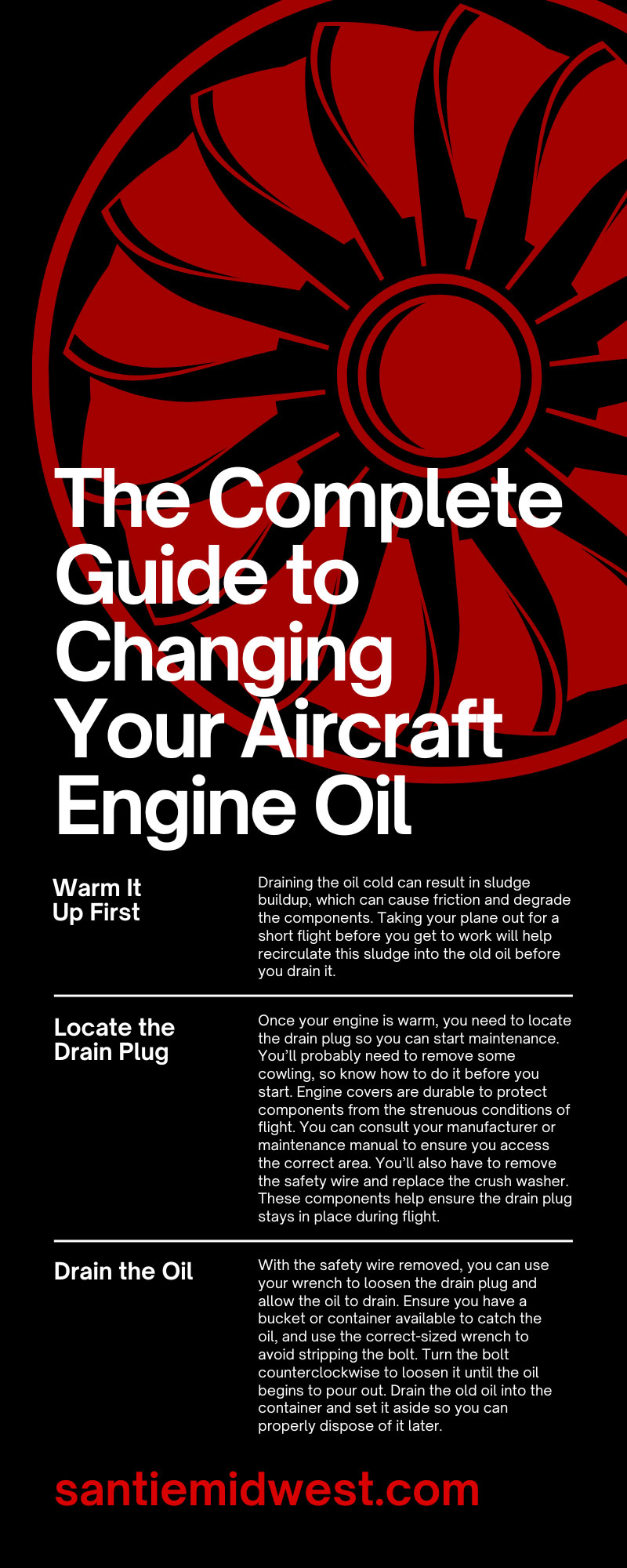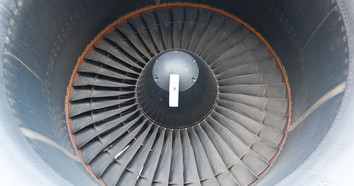If you own an aircraft, you understand the convenience of making last-minute plans without worrying about booking from a commercial airline. Unfortunately, aircraft engines require a lot of care, and many owners don’t know they can sign off on their own aircraft maintenance. However, with just a few basic steps, you can replace your plane’s engine oil yourself. Here’s the complete guide to changing your aircraft engine oil.
Why Change Your Own Oil?
As with passenger vehicles, you must adequately maintain aircraft engines to maximize their lifespan and ensure they perform well. But the problem with getting an oil change from a professional aircraft mechanic is that it can be expensive and time consuming. You may have to wait until they have an opening, and even then, you’ll have to pay the asking price.
Changing your own oil can save you money and help you know your engine better. By doing your own routine maintenance, you’ll have a better idea of how your engine functions and what it needs to stay operational. It also allows you to catch major issues before they become too costly. If you do decide to change your own oil, you’ll need to follow specific steps to avoid damaging the components. Continue reading to learn what these steps are.
Warm It Up First
Most mechanics recommend you warm up your engine before working on it. Doing so will heat the oil, lowering its viscosity and making it easier to drain. Heating also helps draw out any existing contaminants so they drain with the oil rather than collecting at the bottom of the pan.
Draining the oil cold can result in sludge buildup, which can cause friction and degrade the components. Taking your plane out for a short flight before you get to work will help recirculate this sludge into the old oil before you drain it.
Locate the Drain Plug
Once your engine is warm, you need to locate the drain plug so you can start maintenance. You’ll probably need to remove some cowling, so know how to do it before you start. Engine covers are durable to protect components from the strenuous conditions of flight. You can consult your manufacturer or maintenance manual to ensure you access the correct area. You’ll also have to remove the safety wire and replace the crush washer. These components help ensure the drain plug stays in place during flight.
Drain the Oil
With the safety wire removed, you can use your wrench to loosen the drain plug and allow the oil to drain. Ensure you have a bucket or container available to catch the oil, and use the correct-sized wrench to avoid stripping the bolt. Turn the bolt counterclockwise to loosen it until the oil begins to pour out. Drain the old oil into the container and set it aside so you can properly dispose of it later.
Make sure you fully drain the oil before you continue; this helps avoid issues down the line. Next, check it for impurities, particles, and dirt. While some sludge is normal, you should take excess amounts of bits of metal seriously. You can send your drained oil to a professional service for analysis if you’re concerned about its quality.
Replace the Drain Plug
After you have fully drained the oil, you can replace the plug and crush washer. Remember to rewire it to ensure it stays in place during your next flight. If the plug comes off, it could cause overheating, loss of acceleration, and misfires, putting you and any passengers at risk.
Basically, you want to put everything back the way you found it. If it helps, you can take pictures before beginning the oil change to ensure consistency and accuracy during reassembly. This part of the process is essential to get right. If you’re unsure, you can talk to a certified aircraft mechanic to better understand how to do it.
Install a New Oil Filter
Now that you’ve drained the oil and replaced the drain plug, it’s time to install your new oil filter. The filter will also have a safety wire, so follow the same process to ensure the filter stays in place. Write down the date on the available space on the filter so you or the next mechanic knows when the most recent servicing occurred. And as with the oil, check the old filter for metal particles and other abnormalities to ensure your engine is in good shape.
Add Oil
After you’ve installed a new filter, you can add new oil. Different aircraft engines use specific types of oil, making it essential to use the right kind. Failing to use the correct type of engine oil will cause increased friction between components, potentially resulting in catastrophic damage.
You should use a filter and a well-lit area to avoid spilling oil on the engine. You’ll probably need at least 10 quarts of oil to fill the pan. Once you’ve finished, get in the cockpit and check the indicators to ensure the oil is filled to the correct level. You may want to start the engine to ensure everything is running correctly before buttoning up the cowling.
Clean Spills
You’re not done yet! Your next step is to clean up any oil spills before they stain the garage floor. You can absorb spills with materials such as kitty litter and sawdust. Simply pour the substance over the oil and allow it to soak in before sweeping it up. You can use paper towels to wipe up any oil that’s gotten on your aircraft body.
You can take the old oil to a waste disposal site. Some hardware stores may also dispose of it for you, but be prepared to pay a fee.
Keep Your Aircraft Running Smoothly
Changing your aircraft engine oil can be complicated, but this complete guide will help you save money on maintenance fees. Pay attention to your oil and change it every 50 hours of flight. After all, when it comes to your aircraft, safety should be your priority. And while performing maintenance, you may also want to add grease to essential components, such as wheel bearings, lifters, and joints. Aviation lubricants suppliers offer a variety of solutions, making it easy to find one that fits your needs.


